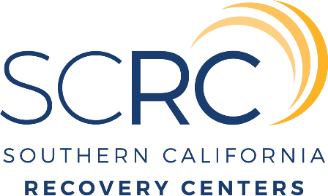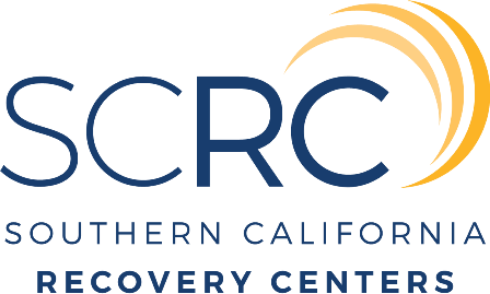When does indulgence become an addiction?
Whether it’s physical signs like sleep disruption or psychological red flags such as anxiety, the signs and symptoms are there. This article offers a direct look at these symptoms, why they matter, and how recognizing them can pave the way for recovery in college-aged men.
Keep in mind:
- Physical and withdrawal symptoms such as changes in weight, sleep patterns, and intense cravings indicate that substance abuse disorder is affecting the body’s ability to function normally.
- Psychological addiction symptoms including mood swings, cognitive impairment, and increased emotional volatility can trigger changes in the brain and may lead to additional mental health disorders.
- Substance abuse impacts social behavior, leading to isolation, strained relationships, and risky behaviors, with distinct challenges and treatment approaches needed for different demographics like college students.
Decoding the Signs: Physical Indicators of Addiction

Our bodies serve as accurate diaries of our struggles, including those with drug addiction. The physical symptoms that accompany addiction are often the most observable evidence and include:
- alterations in hunger
- fluctuations in weight
- variations in sleep habits
- modifications to blood pressure
These signs are a cry for help from within our physiology, signaling an underlying issue.
Each substance involved in addiction imprints its distinct mark on us—from the agitation and heightened vigilance associated with stimulant abuse to the lethargy and impaired motor skills indicative of depressant overuse. Recognizing these signs is not about placing blame, but acknowledging when it’s time to seek out intervention through effective drug addiction treatment strategies.
Withdrawal Symptoms: The Body’s Reaction to Substance Absence
In the absence of a substance, the body communicates its need through withdrawal symptoms. Symptoms such as physical sickness, trembling, perspiration, and strong cravings signal distress. The struggle to accomplish everyday activities without the substance or experiencing mood swings and irritability from psychological dependencies indicates that substance use disorders have significantly impaired bodily functions.
Health Deterioration: Recognizing the Long-Term Consequences
Long-term substance use often leads to a host of health problems that can have enduring and sometimes irreversible consequences. Individuals on this path may experience cardiovascular issues, gastrointestinal disturbances, as well as profound psychological and neurological effects. These conditions not only affect one’s immediate health, but can also significantly impact their well-being for many years into the future, often casting prolonged shadows over their overall health trajectory.
Navigating the Mental Maze: Psychological Symptoms of Addiction

Our mental landscape is intricate, and addiction often acts as its daunting captor. The psychological indicators of addiction include cravings, denial, anxiety, depression, and cognitive difficulties.
Symptoms associated with a mental health disorder frequently overlap with other psychiatric conditions. Far from being insignificant byproducts, these symptoms are central to the essence of addictive behaviors. They can amplify emotional instability, provoke severe fluctuations in mood and precipitate changes both structurally and functionally within the brain that potentially increase the risk for subsequent mental disorders. Seeking assistance from a qualified mental health professional is advisable to tackle such complexities.
The Emotional Rollercoaster: Mood Swings and Behavioral Changes
Enduring the tumultuous journey of addiction is a distressing ordeal. Those suffering may oscillate between bouts of depression and surges in irritability, particularly when trying to stop or facing withdrawal from their substance dependence. The signs of psychological addiction are evident through behavioral shifts.
Such changes manifest as refusal to acknowledge issues with substance abuse, idealizing the addictive substance, and experiencing an unsettling agitation during times without access to illegal drugs. This portrait of mental disturbance brought on by drug misuse is delineated within the Diagnostic and Statistical Manual.
Cognitive Impairment: How Substance Abuse Affects the Brain
Substance abuse goes beyond mere poor decision-making. It acts as a disruptor to standard brain functions, resulting in cognitive dysfunction. The three core regions of the brain that are impacted include the brain stem, limbic system, and cerebral cortex. Notably profound changes occur with addictions such as those from methamphetamine use and can remain long after cessation of drug use, highlighting the enduring impact addiction has on an individual’s neurological state.
Substance Use and Social Fallout

Substance use has the potential to fray the intricate web of our social connections, resulting in solitude, damaged relationships, and engagement in dangerous activities. The repercussions of substance abuse reach far beyond just the user. It influences their work productivity, family interactions, and can also hinder their children’s emotional as well as social growth.
The Isolation Effect: When Drug Use Disrupts Relationships
The use of drugs, potentially leading to drug abuse, can fracture the connections we hold with our social groups and harm family and friendly bonds. The resultant sense of isolation from this can cause individuals struggling with addiction to lose vital support networks that are essential for their recovery and general wellness.
Risky Behaviors: The Dangerous Choices Made Under Influence
When individuals engage in substance abuse, they may indulge in dangerous activities that put both their own welfare and the well-being of others at risk. Examples include driving under the influence or having unprotected sex — behaviors that are fraught with danger and can result in dire outcomes.
Gender-Specific Responses to Substance Abuse

Examining substance abuse through the perspective of gender uncovers varied trends and difficulties. Men and women often follow divergent trajectories toward drug addiction, encountering specific barriers and susceptibilities that necessitate tailored strategies in addiction treatment.
Women and Addiction: Vulnerabilities and Treatment Barriers
Women face a terrain of addiction that is marked by distinct challenges and susceptibilities. These range from the swift escalation of marijuana use disorders to the influence estrogen has on heightened sensitivity towards stimulants, underlining the unique and intricate nature of women’s encounters with addiction.
Men’s Battle with Substance Use: Prevalence and Risk Factors
Specific environmental factors, along with societal and peer influences, play a role in shaping the male experience of substance use disorders. Men grapple with unique battles related to substance use, which are influenced by particular risk factors that lead to increased rates of usage and dependence.
Addiction Self Assessment Test
Below is a quiz that can help you determine whether to reach out for a professional diagnosis. The self-test below should not replace an official assessment. If you think you might be suffering from addiction, reach out to us today to speak to our admissions team.
Substance Abuse Among College Students: A Growing Concern

During the formative college years, while students experience significant personal development, they also face increased susceptibility to substance abuse. The confluence of an environment that frequently encourages experimentation and the intense stress associated with scholarly pursuits places college-goers at particular risk for engaging in substance use. Research from the National Institute on Drug Abuse indicates that individuals within this demographic are more likely to encounter issues related to drug abuse.
The Party Culture: Binge Drinking and Recreational Drug Use
On college campuses, the prevalent party scene acts as a significant force propelling substance abuse among students. Engaging in heavy episodic drinking and recreational drug consumption is typical within this milieu, where peer pressure not only sparks but also perpetuates such practices.
The Stress Factor: Academic Pressure and Substance Misuse
As students grapple with the intense demands of their academic environments, they may turn to substances such as alcohol, marijuana, and prescription stimulants in an attempt either to heighten concentration or mitigate stress. Despite these intentions, this form of drug misuse can ironically impair rather than improve their educational outcomes.
Addiction's Grip: Understanding Behavioral Addictions
Even though behavioral addictions do not encompass the consumption of substances, they exhibit concerning parallels with substance addictions due to their compulsive patterns and detrimental effects, underscoring addiction’s broad and powerful hold on people.
Seeking Help: Pathways to Addiction Medicine
Recognizing the necessity for assistance marks a significant milestone on the road to recovery. There are multiple approaches within addiction medicine, yet each strives to develop tailored treatment plans that reflect each person’s specific situation and obstacles they face. Specialized health care providers in the field of addiction medicine are instrumental throughout this process.
Effective Treatment Modalities: From Medication to Therapy
Effective treatment for substance use disorder frequently involves a hybrid approach, incorporating both medication-assisted treatment to mitigate the impact of other drugs and curb cravings, alongside behavioral therapies designed to specifically target the intricacies of the use disorder.
Accessing Additional Resources: Support Systems and Recovery Groups
Recovery groups and support systems are essential for maintaining long-term sobriety, offering a crucial network of resources and motivation. Positive peer support and collective experiences found within these communities help to preserve the progress achieved in treatment, underscoring their invaluable contribution to sustained recovery.
Addiction’s impact extends far beyond the individual—it touches families and communities alike. Acknowledging these signs and symptoms, and pursuing drug addiction treatment, is a big step towards achieving recovery.
If you’re ready to get help, reach out to our admissions team for a free assessment to learn how SCRC can help.
Southern California Recovery Centers
Southern California’s Premier Outpatient Addiction Recovery Center
Frequently Asked Questions
Key indicators of addiction often encompass behaviors such as deceit or surreptitiousness, along with a decline in performance and presence. Individuals may retreat from their duties, engage in isolation, and display a lack of enthusiasm for activities that were previously significant to them.
Such signs and symptoms stand as critical markers for recognizing an addictive pattern.
The addiction components model (Griffiths, 2005) defines six fundamental characteristics of addiction which include: the prominence of substance or activity in one’s life (salience), using the substance or engaging in the activity to alter mood (mood modification), an increasing need for more of the substance or activity to achieve previous effects (tolerance), experiencing adverse physical and psychological reactions when reducing or ceasing use/activity (withdrawal symptoms), encountering disputes within oneself and with others due to the addictive behavior (conflict), and a tendency to return to addictive behaviors after attempting cessation (relapse).
Addiction can be influenced by various contributors including a genetic predisposition, biological aspects, environmental factors, and the age at which first use occurs. Each of these elements may increase an individual’s susceptibility to becoming addicted.
Individuals between the ages of 18 and 24 are Described as college-aged, although there is a growing trend of students who are older – approximately 22%, pursuing higher education.
Frequent physical signs of addiction include fluctuations in weight or appetite, disruptions in sleep patterns, and issues with blood pressure. There may be symptoms specific to the particular substance being abused.



